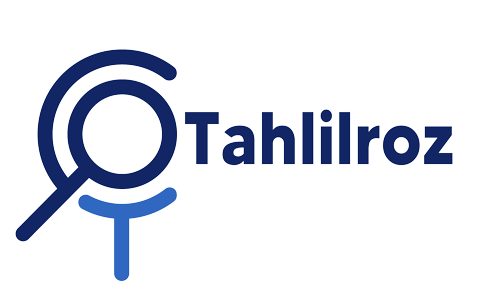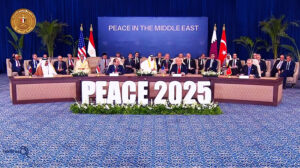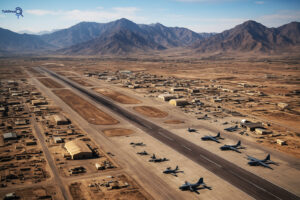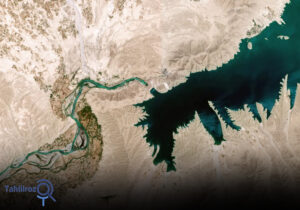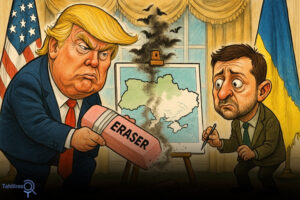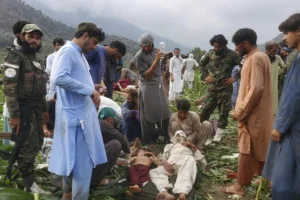Sharm el-Sheikh Summit 2025: Behind the Illusion of Peace and the Reality of Gaza’s Resistance
The international summit in Sharm el-Sheikh, Egypt, titled “Peace in Gaza,” was introduced as a milestone in diplomatic efforts to end the two-year Gaza war. The meeting, attended by senior officials from the United States, Israel, Egypt, Qatar, and Turkey, and mediated by U.S. President Donald Trump, was held on October 13, 2025. The agreement was expected to establish a ceasefire, facilitate prisoner exchanges, and begin the reconstruction of Gaza. However, reports and on-the-ground analyses reveal that the agreement faces serious challenges.
According to The Guardian, since the ceasefire began, Israel has violated it 47 times, resulting in 38 Palestinian deaths and 143 injuries. These violations included direct shootings, shelling, and arrests. In one incident, Israeli forces killed 11 members of a Palestinian family for crossing an unmarked “yellow line.” Gaza authorities have urged the UN and ceasefire guarantors to respond to Israel’s continued violations.
Analysts at the Carnegie Endowment argue that the Sharm el-Sheikh Summit 2025 agreement was more of a “symbolic performance” than a substantive peace deal. They contend that, while the declared goal was to achieve a lasting ceasefire, the underlying priority was disarming Palestinian groups and demilitarizing Gaza, rather than supporting Palestinian sovereignty and upholding international law.
This situation recalls the Afghan experience — a nation that, after two decades of extensive U.S. military presence and promises of reconstruction, was left with destroyed infrastructure and a people forced to rebuild on their own. For Gazans, a similar pattern is emerging: grand international promises that are delayed in practice, leaving civilians to survive amid ruins.
Palestinian Resistance: Strategic Intelligence and Tactical Management
Hamas and other resistance groups have demonstrated that they are not merely military forces, but strategic actors capable of leveraging diplomatic agreements to protect Palestinian national interests. According to Reuters, a senior Hamas official stated: “We cannot exclude ourselves from Gaza’s internal security or surrender our weapons.”
Similarly, the International Crisis Group reported that Hamas’s response to Trump’s proposal was “strategic and intelligent”; while some conditions were accepted, full disarmament was rejected. This shows that the resistance can engage in negotiations while maintaining its red lines, contradicting mainstream media portrayals of Hamas as being forced into submission.
Broken Ceasefire: Israel’s Repeated Violations and Gaza’s Reality
Despite the declared ceasefire, Israel has repeatedly violated it, undermining the agreement’s legitimacy. The Guardian notes that “Israeli forces have launched attacks despite the apparent truce.” Al Jazeera also reports that Gaza’s population still lacks full access to food, water, and fuel, with humanitarian aid deliveries severely restricted. These realities indicate that the ceasefire exists only on paper, not in practice.
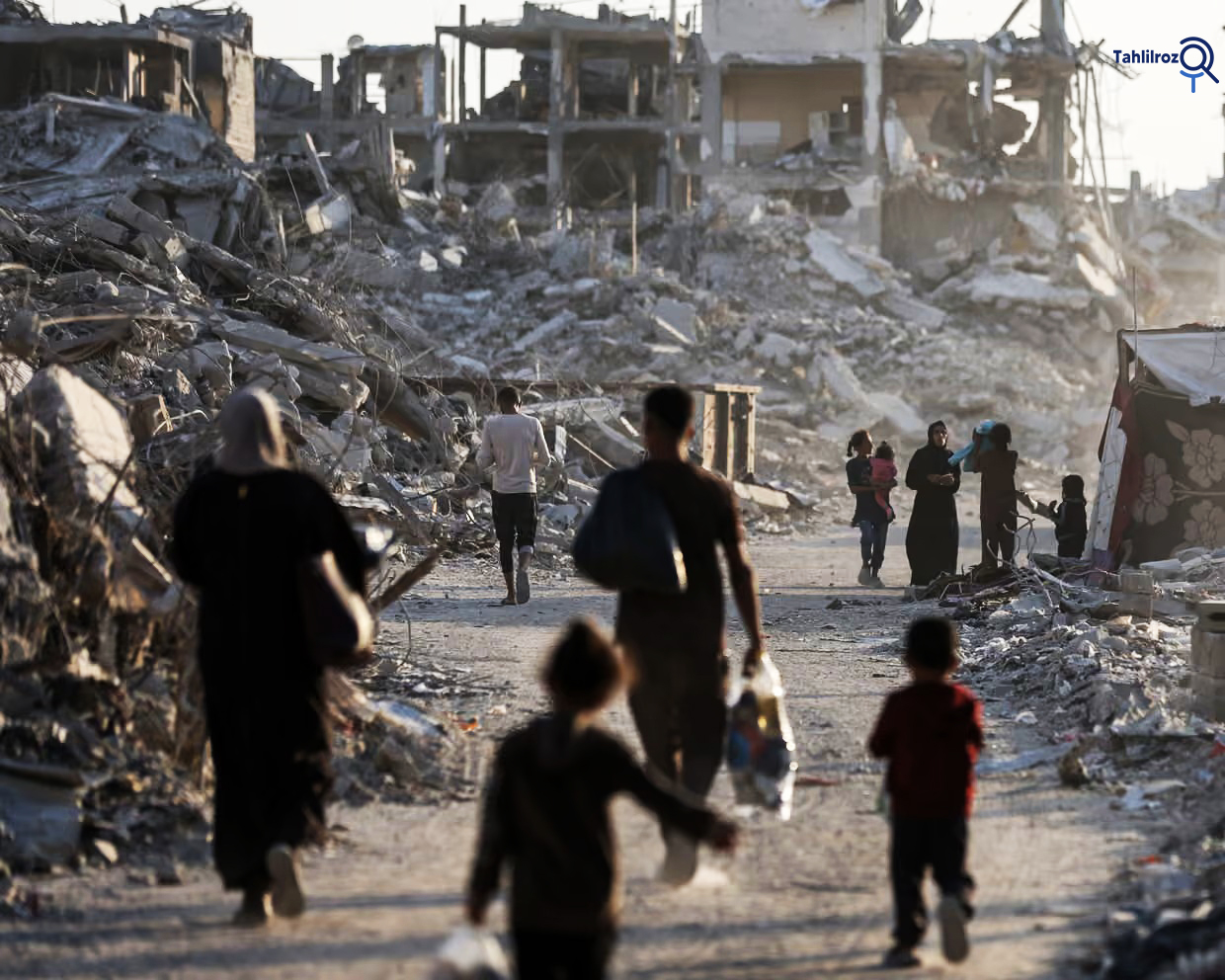
Regional Powers and the Illusion of Pressure on Israel
Arab states and Turkey were presented as guarantors of the Gaza ceasefire, but their actual role in exerting effective pressure on Israel has been limited and, at times, contradictory. Turkey, initially an active mediator, faced Israeli opposition and was excluded from the proposed international monitoring mission.
Meanwhile, several Arab countries that publicly opposed the war strengthened their security and military ties with Israel. Leaked documents reveal that, while condemning the war in Gaza, these governments expanded covert military cooperation with Tel Aviv. This dual behavior reflects a failure to apply meaningful regional pressure, leaving the ceasefire fragile and its implementation uncertain.
Three Competing Models for Gaza’s Future
The future of Gaza, in light of recent agreements, has diverged into three contradictory models: the American, the Israeli, and the Palestinian resistance models — each differing in goals, sovereignty, and security philosophy.
1. The American Model: External Oversight and Territorial Division
The U.S. has proposed dividing Gaza into two zones — one under Israeli control and another under Hamas administration. Reconstruction would occur only in Israeli-controlled areas until Hamas surrenders its weapons. This top-down approach sidelines Hamas and diminishes local agency.
2. The Israeli Model: Full Security and Economic Control
This model envisions total Israeli control over Gaza’s security and economy, including the complete disarmament of Hamas and the establishment of a new administrative body aligned with Israeli conditions. In this framework, Palestinians function merely as observers or employees of international agencies — not as sovereign actors.
3. The Resistance Model: Independent Palestinian Administration
The resistance’s model prioritizes Palestinian sovereignty and self-governance. Hamas, representing the resistance, has declared that it will not disarm unless there is a clear political horizon for the creation of a Palestinian state. This model is grounded in popular will and national rights rather than external dictates.
The clash among these models underscores the profound challenges to achieving sustainable peace in Gaza. While external models focus on control and supervision, the resistance model emphasizes autonomy and independence — a fundamental ideological divide that keeps Gaza’s future uncertain.
Disarming the Resistance: Strategic and Humanitarian Risks
Disarming Gaza’s resistance forces without concrete security and political guarantees would create a power vacuum easily exploited by extremist groups or regional proxies. On the ground, Hamas functions not only as a military organization but also as a provider of social order, municipal services, and crisis management. Sudden disarmament could disrupt urban services, humanitarian aid distribution, and internal stability — potentially sparking new cycles of chaos and factional conflict.
From a strategic standpoint, maintaining a dominant local actor (despite its flaws) helps prevent reoccupation, governance collapse, and increased foreign interference. Thus, without a credible political pathway toward Palestinian self-rule and guaranteed national rights, full disarmament is neither logical nor humane.
Regionally, preserving the resistance’s capacity until a credible political settlement is achieved — one that includes commitments to Palestinian statehood, transparent aid mechanisms, and reliable guarantors — serves as leverage to compel international actors to honor their obligations.
Historical experience shows that unilateral disarmament, without an enforceable reconstruction framework, international oversight, and programs to restore dignity and economic opportunity, leads only to superficial change. Moreover, if Hamas were to disarm without political assurances, extremist networks could fill the void, turning Gaza into a battleground for regional proxy wars.
For this reason, regional analysts stress that decisions regarding weapons must be made alongside a political roadmap and security guarantees, not in isolation or haste.
From Kabul to Gaza: Lessons from Afghanistan’s Experience
Afghanistan offers a clear example of the consequences of unfulfilled promises and the withdrawal of foreign powers. After two decades of U.S. military presence, Afghans were left facing frozen assets, unimplemented security pacts, and widespread abandonment. This demonstrates how international promises, without enforceable mechanisms, not only devastate daily life but also erode public trust.
Gaza’s situation mirrors Afghanistan’s in many ways: despite promises of reconstruction and security, Gazans continue to endure damaged infrastructure, fragile services, and constant threats. Like Afghans, Gazans have been forced to rely on self-reliance and local governance under pressure, while facing unreliable international support. This parallel helps readers understand Gaza’s plight through a historical lens — showing how Afghanistan’s experience serves as a warning for the empty nature of performative diplomacy and external pressure in Palestine.

Conclusion: What the Sharm el-Sheikh Summit 2025 Really Tells Us About Peace in Gaza
The recent developments in Gaza and the ineffectiveness of the Sharm el-Sheikh Summit 2025 highlight the stark contrast between international promises and ground realities. While the U.S. and Israel promoted the illusion of peace through symbolic agreements, Hamas and the resistance managed to preserve core national interests through strategic negotiation and steadfastness.
Regional mediation efforts, though present, were fragmented and ineffective, hindered by conflicting agendas and covert alliances. Gaza’s future is now divided among three competing models — American, Israeli, and resistance — with only the resistance model, emphasizing independent Palestinian governance, capable of ensuring genuine sovereignty and security.
From the perspective of both resistance movements and independent states supporting Palestinian freedom, forced disarmament remains unacceptable, as it would only endanger regional stability.
The parallel with Afghanistan is striking: unreliable promises, foreign withdrawal, and resource limitations compel local populations to assume responsibility for reconstruction, security, and daily governance. Without credible enforcement mechanisms, regional solidarity, and grassroots
participation, international agreements merely perpetuate a cycle of disillusionment and abandonment.
Gaza today, like Afghanistan yesterday, needs internal resilience, autonomous management, and a globally realistic approach to achieve lasting peace and stability.
Mojtaba Hemmat
